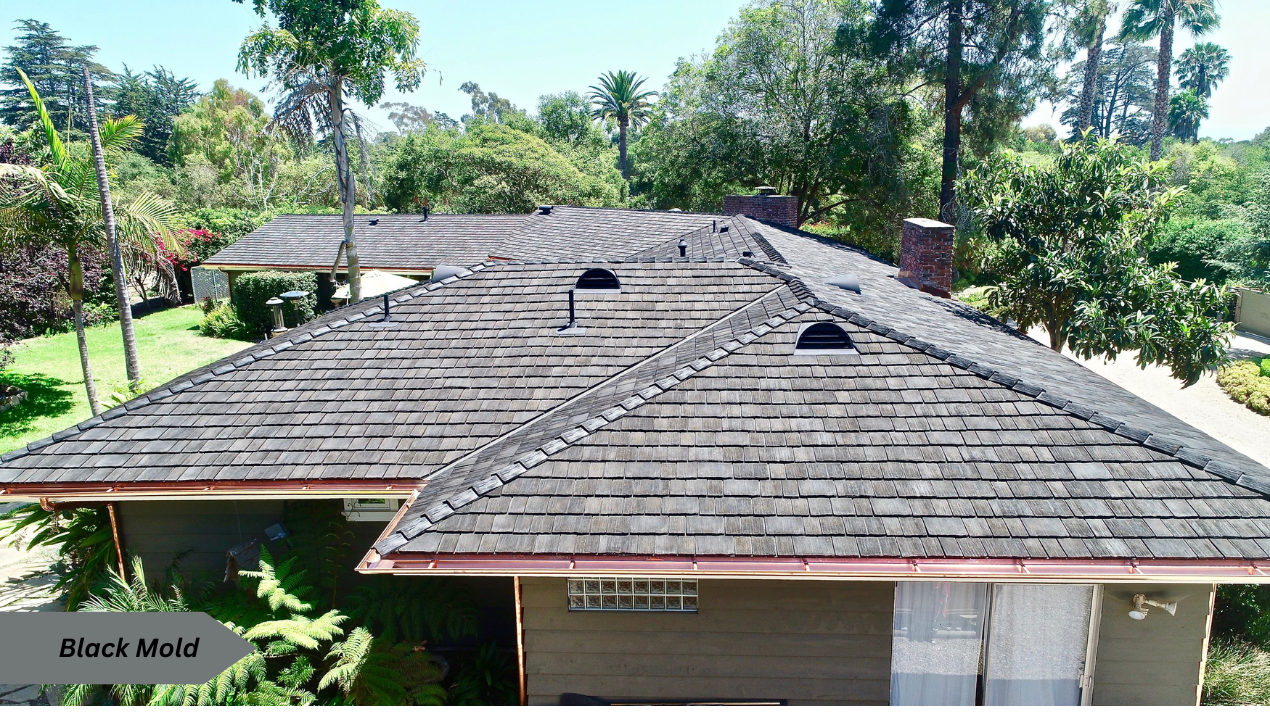Mold thrives in damp and humid environments, making roof shingles particularly susceptible, especially in areas with high rainfall or humidity.
The presence of mold on roof shingles not only affects the aesthetic appeal of your home but can also lead to more significant issues such as water damage and rot.
Prevention is Key
Preventing mold growth on roof shingles is the first line of defense. Regularly inspecting your roof for signs of mold, keeping gutters clean, and ensuring proper ventilation in your attic can help prevent mold growth.
Mold on Roof Shingles
Mold on roof shingles is often characterized by black or greenish stains. If left untreated, these stains can spread and lead to more extensive damage.
Tools and Materials Needed
Before tackling mold removal, gather the necessary tools and materials, including safety gear such as gloves, goggles, and a mask, as well as a stiff brush, bleach solution, and a garden hose.
Safety Precautions
Safety should be a top priority when removing mold from roof shingles. Wear protective gear to prevent exposure to mold spores and chemicals, and use caution when working at heights.
Step-by-Step Guide to Removing Mold
- Prepare the Area: Clear the surrounding area and ensure a stable ladder for safe access to the roof.
- Apply the Bleach Solution: Mix bleach with water in a 1:1 ratio and spray it onto the affected areas of the roof shingles.
- Scrub the Shingles: Use a stiff brush to scrub the mold-infested shingles gently.
- Rinse Thoroughly: Rinse the roof shingles with a garden hose to remove the bleach solution and any loosened mold.
- Repeat if Necessary: For stubborn mold stains, repeat the process until the shingles are clean.
- Inspect and Dry: Inspect the roof for any remaining mold and allow it to dry completely.
Alternative Methods
In addition to bleach, other effective methods for removing mold from roof shingles include using vinegar, hydrogen peroxide, or commercial mold cleaners.
Cleaning and Maintenance Tips
To prevent mold from returning, keep your roof clean and free of debris, trim overhanging branches, and address any issues with ventilation or drainage promptly.
Professional Help
If the mold infestation is extensive or if you’re uncomfortable working at heights, it’s best to seek assistance from professional roof cleaners or mold remediation specialists.
Conclusion
Removing mold from roof shingles is essential for maintaining a safe and healthy home environment. By following the outlined steps and taking preventative measures, you can effectively eliminate mold and prevent its return, ensuring the longevity of your roof and the well-being of your family.
FAQs
- How often should I inspect my roof for mold?
- It’s recommended to inspect your roof for mold at least once a year, especially after periods of heavy rainfall or humidity.
- Can mold on roof shingles cause health problems?
- Yes, exposure to mold spores can trigger allergic reactions and respiratory issues, particularly in individuals with pre-existing conditions.
- Is it possible to prevent mold growth on roof shingles entirely?
- While it’s challenging to prevent mold growth entirely, regular maintenance and preventative measures can significantly reduce the risk.
- Will removing mold from my roof shingles damage them?
- Properly removing mold from roof shingles should not cause damage if done correctly. However, it’s essential to use gentle cleaning methods to avoid unnecessary wear and tear.
- Are there any eco-friendly methods for removing mold from roof shingles?
- Yes, alternatives such as vinegar or hydrogen peroxide can be effective eco-friendly options for removing mold from roof shingles.
